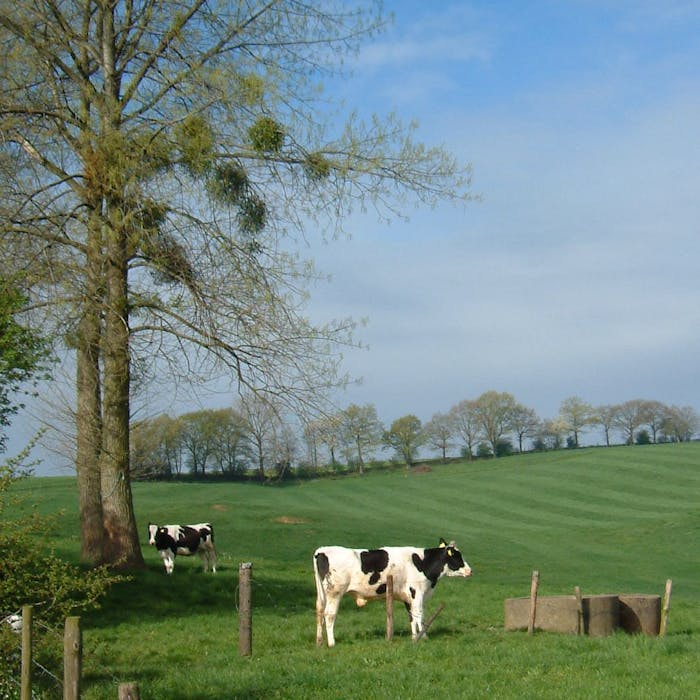
Mistletoe, the mystic plant
Mistletoe is a familiar part of the Christmas tradition, and commonly seem growing wild in Britain. It is an evergreen plant which produces clusters of pearlescent white berries in winter which are favourites with hungry birds such as thrushes.
Mistletoe is 'hemiparasitic', which means it takes some of its food from another plant. It grows on the branches of trees, pulling water and nutrients from its host, while its green leaves also photosynthesise.
There are more than 900 species of mistletoe around the world. The only species native to the UK is European mistletoe (Viscum album) which has the widest host range of all its relatives.
Mistletoe grows in the branches of trees such as hawthorn, poplar and lime, although in the UK the most common hosts are cultivated apple trees.
Despite growing on trees, mistletoe is not generally found in a woodland setting, preferring hosts in open situations with plenty of light. You’re more likely to see it in gardens, orchards, parkland and even churchyards. This means that mistletoe would have been less abundant in ancient times when woodland was more typical.
It is commonly found in Wales, the West Midlands and the South of England, with particularly large populations in Gwent, Herefordshire, Worcestershire, Gloucestershire and Somerset. It was once thought that this clustering was due to the number of apple orchards in these regions, but this has been proved incorrect as orchards are found in locations where mistletoe is absent.
Mistletoe is widely scattered elsewhere in England and Wales, but is rarely seen in eastern and northern England and Scotland.
The range of mistletoe is expanding in Britain and it is thought that this is due to increasing numbers of the migratory warbler Blackcap visiting our shores. Berries, including those of mistletoe, are an essential part of their diet. On eating the white flesh of the mistletoe berry, the birds wipe their bills on twigs and branches, leaving behind the seed. If the seed is deposited on a host tree and manages to take hold, a mistletoe plant might germinate on the branch. It seems that blackcaps are more efficient at spreading mistletoe seeds than other birds, such as the mistle thrush, which also feed on the berries.
Mistletoe has long been regarded as a magical plant.
It is often associated with the ancient Druids, whose reverence of the plant during the winter solstice was described by Pliny and Caesar. Mistletoe also has a place in Norse mythology, used by the evil god Loki as a weapon to kill the god Balder.
In the Christian era, mistletoe in the Western world became associated with Christmas as a decoration under which lovers are expected to kiss, as well as with protection from witches and demons. Mistletoe continued to be associated with fertility and vitality through the Middle Ages, and by the 18th century it had also become incorporated into Christmas celebrations around the world. The earliest documented case of kissing under the mistletoe dates from 16th century England, a custom that was apparently very popular at that time.
Further reading
Links to external websites are not maintained by Bite Sized Britain. They are provided to give users access to additional information. Bite Sized Britain is not responsible for the content of these external websites.
